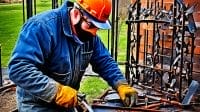Welcome to our article on soldering to stainless steel. If you’ve ever tried to solder stainless steel, you know it can be a challenge. But with the right tools and techniques, it is possible to create a high-quality bond that will last for years to come. Understanding the possibilities of soldering to stainless steel is important for anyone working with metals, whether you’re a DIY enthusiast or a professional metalworker. In this article, we’ll cover the basics of stainless steel and how it differs from other metals, the process of soldering, the challenges of soldering to stainless steel, and tips for success. By the end of this article, you’ll be equipped with the knowledge to successfully solder to stainless steel and create strong bonds for your projects.
Understanding Stainless Steel
Stainless steel is a popular alloy that is widely used in various industries due to its exceptional properties. It is composed of iron, carbon, and other elements like chromium, nickel, and molybdenum, which improve its strength, hardness, and corrosion resistance. Stainless steel is classified based on its microstructure, which can be austenitic, martensitic, ferritic, and duplex.
One of the most significant features of stainless steel is its high resistance to corrosion, making it ideal for applications in harsh environments. Stainless steel also has a high melting point, ranging from 1375°C to 1530°C, depending on its composition. This property presents a challenge when soldering to stainless steel as it requires a high temperature to melt the solder, which can affect the integrity of the joint. Therefore, understanding the properties of stainless steel is crucial when considering soldering to this material.
How Does Soldering Work?
Soldering is a method of joining two pieces of metal using a filler metal that has a lower melting point than the metal being joined. When heated, the filler metal flows into the joint between the two pieces and solidifies to create a strong bond. The key to successful soldering is to ensure that the two pieces of metal are clean and free of oxidation, which can prevent the solder from adhering properly.
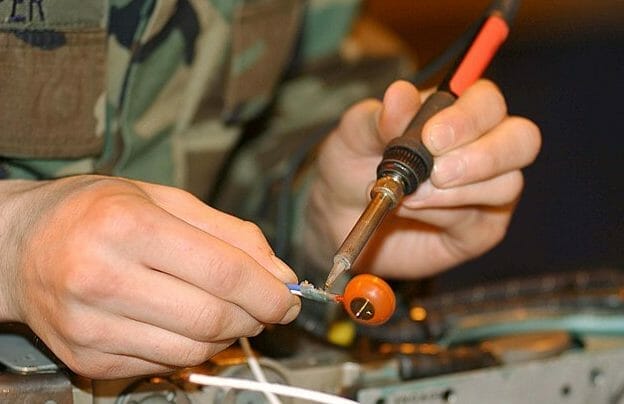
To begin the soldering process, the metal pieces are first cleaned and prepared with a flux, which is a chemical compound that helps to remove any oxidation and acts as a barrier to prevent new oxidation from forming. The flux also helps the solder to flow properly and adhere to the metal. Once the metal is prepared, a soldering iron is used to apply heat to the joint area, melting the solder and creating a strong bond between the metal pieces.
Soldering requires a few key tools and materials, including a soldering iron, solder, flux, and a heat-resistant surface to work on. The soldering iron is used to heat the joint area and melt the solder, while the solder is the filler metal that is melted to create the bond. Flux is applied to the metal pieces to help remove oxidation and promote adhesion of the solder. As with any soldering project, it is essential to follow safety guidelines and wear protective gear to prevent burns or injuries.
Soldering Stainless Steel: Challenges and Solutions
Soldering to stainless steel can be a challenging task due to the metal’s high melting point and resistance to oxidation. However, there are a few solutions you can implement to make the process efficient and successful. Let’s explore these challenges and possible solutions in detail.
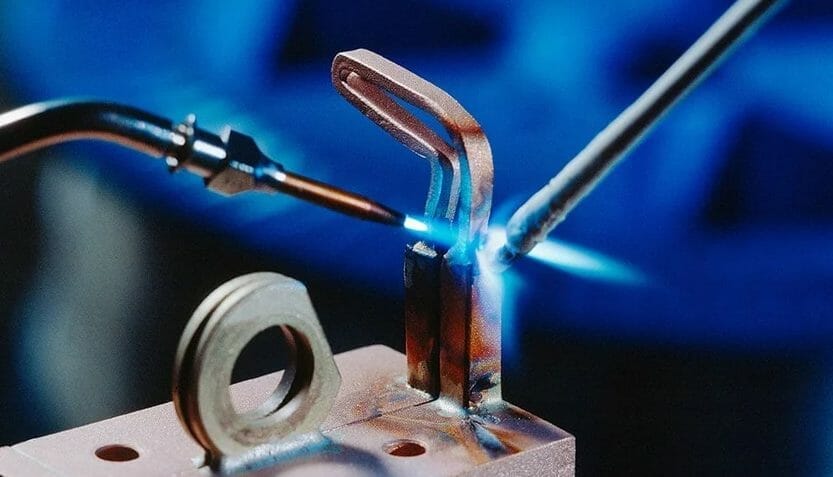
Challenge 1: High melting point
Stainless steel is known for its high melting point, which makes it difficult to heat up and melt the solder. To overcome this challenge, it is important to use a high-powered soldering iron or torch that can generate enough heat to melt the solder and make a strong bond with the stainless steel.
Challenge 2: Resistance to oxidation
Stainless steel is also highly resistant to oxidation, which can prevent the solder from properly bonding with the metal surface. The solution to this challenge is to use a flux that removes any oxide layers on the surface of the stainless steel. The flux also helps the solder to adhere properly to the metal.
Solutions for Soldering Stainless Steel
Solution 1: Use a high-powered soldering iron or torch
As mentioned earlier, using a high-powered soldering iron or torch can help generate enough heat to melt the solder and create a strong bond with the stainless steel. It is essential to choose a soldering iron or torch that has enough power to heat the stainless steel without damaging it.
Solution 2: Use the right type of flux
Choosing the right type of flux is crucial for successful soldering to stainless steel. The flux should be specifically formulated for stainless steel and capable of removing any oxide layers on the metal surface. A good quality flux helps the solder to spread easily and evenly, ensuring a strong bond with the metal.
Solution 3: Clean and prepare the metal surface properly
Before soldering, it is important to clean the surface of the stainless steel thoroughly. Any dirt, grease, or oxide layers can interfere with the bonding process. Use a degreaser or rubbing alcohol to clean the surface of the metal, followed by sanding with fine-grit sandpaper to create a rough surface that the solder can adhere to. Applying a layer of flux after sanding can also help remove any remaining oxide layers.
By implementing these solutions, soldering to stainless steel can be a successful process. Remember to choose the right tools and materials, clean and prepare the metal surface properly, and use a high-powered soldering iron or torch. Happy soldering!
Preparation for Soldering Stainless Steel
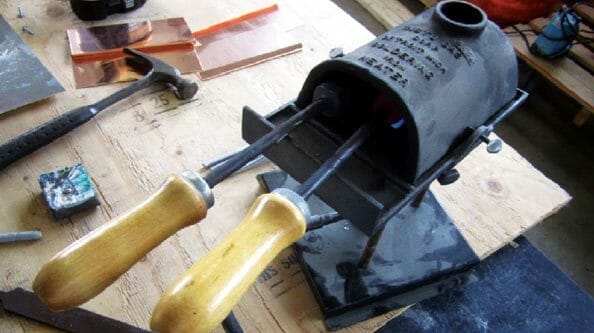
Soldering to stainless steel requires careful preparation in order to achieve a successful bond. Here are the steps to follow:
- Clean the surface: Before soldering, it is important to clean the stainless steel surface to remove any dirt, oil, or grease that may interfere with the bond. You can use a degreaser or alcohol to clean the surface.
- Sand the surface: Sanding the stainless steel surface lightly will help increase the adhesion of the solder. Use fine-grit sandpaper or a sanding sponge to sand the surface evenly in one direction.
- Apply flux: After cleaning and sanding the stainless steel, apply flux to the area that will be soldered. Flux helps to remove any oxidation on the surface and also helps the solder flow evenly. Use a brush to apply the flux evenly.
If you are soldering a larger area, you can use a vice or clamp to hold the stainless steel in place during the soldering process. This will ensure that the pieces are held firmly together and will not move during soldering.
Additional Tips for Preparation
Here are some additional tips to keep in mind when preparing stainless steel for soldering:
- Wear gloves: When handling stainless steel, it is important to wear gloves to protect your hands from sharp edges and potential injury.
- Avoid touching the surface: Touching the cleaned and sanded surface of stainless steel with your bare hands can leave oil or sweat residue, which can interfere with the bond.
- Use a well-ventilated area: When soldering, it is important to work in a well-ventilated area to avoid inhaling any fumes that may be produced during the soldering process.
Choosing the Right Solder and Flux for Stainless Steel
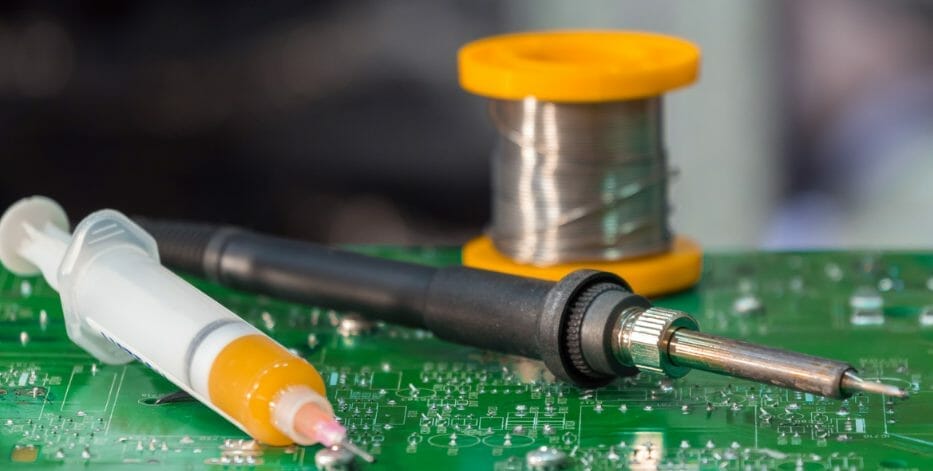
When it comes to soldering stainless steel, selecting the right solder and flux is critical to achieving a successful result. Here are some factors to consider when choosing these materials:
Solder Type
The most commonly used solder for stainless steel is silver solder, which has a higher melting temperature than ordinary solder and is more durable. It is available in wire or sheet form and can be purchased in different grades, depending on the project’s needs.
If you are unsure which grade of silver solder to use, start with a lower grade and gradually increase until you achieve the desired result. Keep in mind that a higher grade of solder will have a stronger bond and hold up better under stress.
Flux
The type of flux you use will depend on the type of solder you have chosen. If you are using silver solder, you will need to use a flux that is specifically designed for use with this type of solder and stainless steel.
The flux serves to clean the surface of the stainless steel and allows the solder to adhere better. Be sure to apply the flux evenly and sparingly to avoid excess buildup, which can lead to poor joint quality. It is also important to clean the joint thoroughly after soldering to remove any excess flux residue.
Compatibility
It is critical to ensure that your chosen solder and flux are compatible with the stainless steel you are working with. Some types of stainless steel are more challenging to solder than others, and certain solders and fluxes may not work well with certain grades of stainless steel.
Be sure to do your research and consult with experts in the field to ensure that you are using the right materials for your particular project.
By carefully choosing the right solder and flux for your project and ensuring compatibility with the stainless steel you are working with, you can achieve a secure and long-lasting bond.
Tips for Soldering Stainless Steel
Soldering stainless steel can be challenging, but with the right tools and techniques, it is possible to achieve a successful solder joint. Here are some tips to help you solder stainless steel:
Adjust Your Soldering Iron Temperature
Stainless steel has a high melting point, so it’s important to use a soldering iron with enough power to heat the metal. Set the temperature of your soldering iron between 600°F and 800°F to achieve a good soldering temperature for stainless steel.
Use the Correct Amount of Solder
Using too much solder can create messy and weak joints. Apply just enough solder to cover the joint, aiming for a smooth and even surface.
Avoid Overheating
Overheating can damage the stainless steel and the solder joint. Work quickly and use a heat sink to help dissipate the heat and protect sensitive areas.
Clean the Joint Before Soldering
Stainless steel can be difficult to bond if it’s not clean. Use a degreaser or acetone to clean the joint before soldering. This will help the solder to stick better and create a stronger bond.
Use a Flux
Flux is essential for soldering stainless steel, as it helps the solder to flow and bond with the metal. Choose a flux that is compatible with stainless steel and use it sparingly, as too much flux can create a messy joint.
Practice
Soldering is a skill that takes practice to master. Try practicing on scrap pieces of stainless steel before attempting to solder a more complex joint.
By following these tips, you can successfully solder stainless steel and create strong and durable joints.
Alternatives to Soldering Stainless Steel
If soldering to stainless steel proves too challenging for your project, there are several alternative methods for joining stainless steel that may be better suited to your needs. These include brazing and welding.
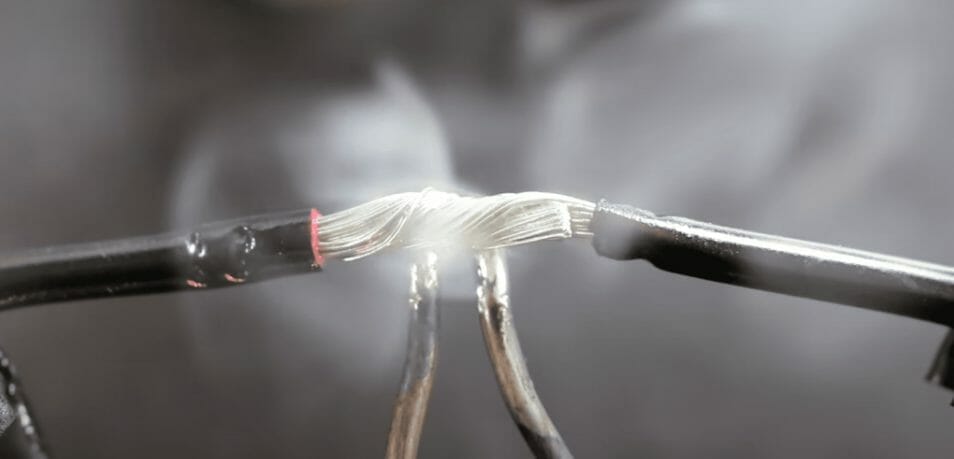
Brazing
Brazing involves melting a filler metal that is then flowed into the joint, bonding the two pieces of metal together when it cools. The filler metal used in brazing has a lower melting point than the base metal, which helps to avoid overheating the stainless steel. Brazing can be done using either a torch or a furnace, and can produce very strong joints.
One advantage of brazing over soldering is that it can be used to join dissimilar metals, such as copper and stainless steel. However, brazing requires greater skill and experience than soldering, as the temperature must be carefully controlled to avoid melting the base metal.
Welding
Welding involves melting the edges of the two pieces of metal to be joined, allowing them to mix together and then solidify as one piece. There are several different types of welding processes that can be used with stainless steel, including Tungsten Inert Gas (TIG) welding, Metal Inert Gas (MIG) welding, and Stick welding.
Welding can produce very strong and durable joints, and is often used in applications where the joint will be subjected to high stress or pressure. However, welding requires more specialized equipment than either soldering or brazing, and can be more difficult to learn.
When considering an alternative method to soldering, it is important to weigh the advantages and disadvantages of each method against the specific requirements of your project. Consulting with a professional welder or brazing expert can help you determine the best option for your needs.
Read More : Expert Tips for Spot Welding Stainless Steel like a Pro
Can I Paint a Stainless Steel Surface Using Soldering Techniques?
When it comes to painting a stainless steel surface, like a sink, soldering techniques are not the way to go. Soldering is typically used for joining metals together rather than for painting purposes. Instead, follow specific instructions on how to paint a stainless sink to achieve the desired result effectively and with the right materials.
FAQ
Here are some commonly asked questions regarding soldering to stainless steel:
Can stainless steel be soldered to other metals?
Yes, stainless steel can be soldered to other metals. However, it is important to ensure the compatibility of the metals before attempting to solder them together. Some metals may require specialized solder and flux.
What is the best material for soldering to stainless steel?
The best material for soldering to stainless steel is typically a silver-based solder. This is because stainless steel is a high-performance metal that requires a strong and durable solder joint. Silver-based solders are known for their strength and ability to create a permanent bond with stainless steel.
Can I use a regular soldering iron for soldering to stainless steel?
It is possible to use a regular soldering iron for soldering to stainless steel, but it may not be powerful enough to handle the high melting point of the metal. It is recommended to use a soldering iron with a temperature control feature that can be adjusted to suit the needs of the project.
What is flux and why is it important for soldering to stainless steel?
Flux is a chemical substance that is used to clean and prepare the surface of the stainless steel before soldering. It helps to remove any impurities or oxidation that may prevent the solder from adhering to the metal. It also promotes the flow of the solder, resulting in a stronger and more durable bond.
Can I use brazing or welding instead of soldering to join stainless steel?
Yes, brazing and welding are alternative methods for joining stainless steel. Brazing uses a filler metal that melts at a higher temperature than solder, while welding uses heat to melt and fuse the metal together. Both methods can create strong and permanent bonds, but may require more specialized equipment and techniques.
What are some common issues when soldering stainless steel?
Common issues when soldering to stainless steel include overheating, poor adhesion, and oxidation. It is important to properly prepare the surface of the metal and use the correct type of solder and flux to avoid these issues. It is also important to carefully monitor the temperature of the soldering iron to prevent overheating and damaging the metal.




